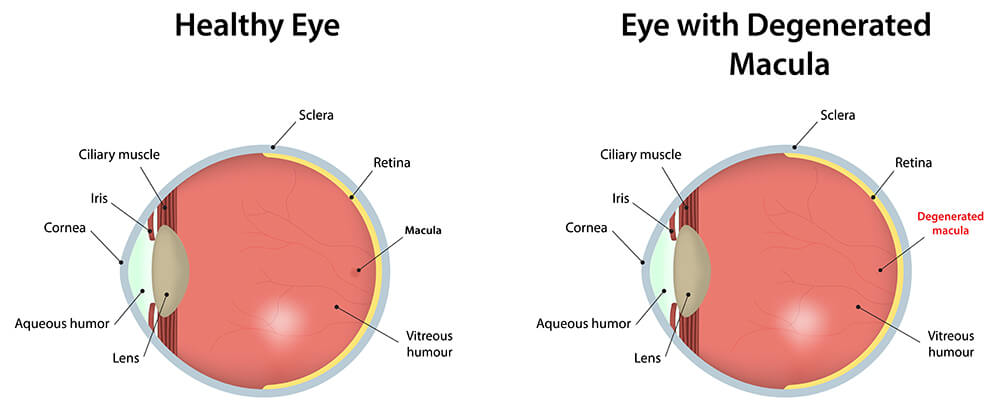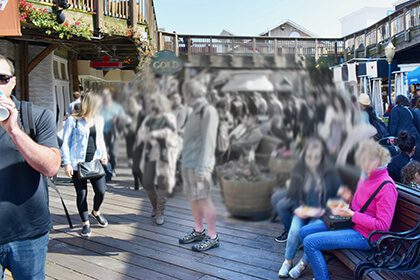Condition
Age-related Macular Degeneration (AMD) is the leading cause of vision loss and blindness in Americans ages 65 and older. The condition occurs when the macula, which is the part of the retina responsible for the sharp, central vision needed to read or drive, deteriorates. Because the macula primarily is affected in AMD, central vision loss may occur. There are two forms of AMD: wet and dry. Patients with wet AMD develop new blood vessels under the retina. This causes hemorrhages, swelling, and scar tissue. Dry AMD is much more common and is characterized by drusen (small, yellowish deposits) and loss of pigment in the retina.

Risk factors include:
- Heredity
- smoking
- blue eyes
- high blood pressure
- cardiovascular disease
Prevalence
1.75 million U.S. residents have advanced age-related macular degeneration. The number of cases is expected to rise to almost 3 million by 2020.
Symptoms

Macular degeneration usually produces a slow, or rarely, sudden painless loss of vision. Early signs of vision loss from AMD include shadowy areas in your central vision or unusually fuzzy or distorted vision. Retinal exams can detect early signs of macular degeneration before symptoms occur. When macular degeneration is suspected, a brief test to measure your central vision may be performed.
Treatment
Dry AMD cannot currently be treated, which does not mean you will lose your sight. Fortunately, dry AMD develops very slowly. Although you may lose some of your central vision over the years, most people are able to have normal, active lives, especially if AMD affects only one eye. Currently, Retina Institute of Hawaii is excepting enrollment for a clinical trial, which seeks a new care option for wet AMD. NeoVista’s Novel Wet AMD Therapy includes a one-time treatment of a targeted dose of beta radiation to leaking blood vessels and two injections of anti-vascular endothelial growth factor. Other treatment options for wet AMD are also available.



🕶️ It’s National Sunglasses Day!
Protect your eyes—and look great doing it. ☀️
Come check out our line of Maui Jim sunglasses—designed here in Hawai‘i and perfect for island life. 🌴
Visit our Optical Shops in Kona or Kaua‘i and find your next favorite pair! 🌺
#NationalSunglassesDay ... See MoreSee Less
0 CommentsComment on Facebook
💧 It’s National Hydration Day!
Did you know that staying hydrated helps support your eye health? When your body is dehydrated, it can reduce tear production—leading to dryness, irritation, and blurry vision.
Drinking enough water helps keep your eyes comfortable and your vision clear, especially in warm, sunny weather. ☀️ So grab your water bottle and take care of your eyes from the inside out! 🌊 ... See MoreSee Less
0 CommentsComment on Facebook
Helping you see the world more clearly. 👓😊 Dr. Safi in our Kauai location loves making every step of your eye exam comfortable and personalized. ... See MoreSee Less
0 CommentsComment on Facebook
Happy Father’s Day to all the Dads across the islands! 🌺
Thank you for all you do—for your families, your communities, and everyone who depends on you.
We appreciate you today and every day. 💙 ... See MoreSee Less
0 CommentsComment on Facebook
Your eyes work in amazing ways! Keep them healthy with regular check-ups and good care. 👁️
#FunFactFriday ... See MoreSee Less
0 CommentsComment on Facebook
We are so proud to expand our community with a brand-new location on the east side of Oahu in the heart of Kailua.
This new center will bring the full spectrum of vision care:
• Comprehensive Optometry
• Subspecialty Ophthalmology Services
• Full-Service Optical with Designer and Affordable Eyewear
• We participate in most insurance plans
Keep an eye on our social media when we announce our opening date! 🌺 ... See MoreSee Less
0 CommentsComment on Facebook